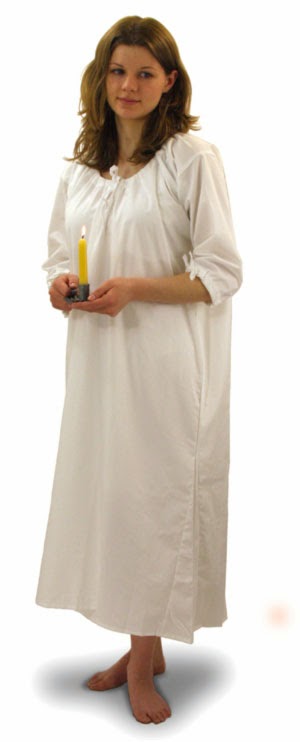“Vain trifles as they seem, clothes have, they say, more important
offices than to merely keep us warm. They change our view of the world
and the world's view of us.”-- Virginia Woolf
As a child at the beginning of Lord Esterleigh’s Daughter, the heroine, Anne lives a poor existence with her
mother in rural England. Her clothes are simple, made from linen and/or
wool that was spun and woven at home or by the local weaver. Throughout the trilogy, her clothes change as her lot in life changes, reflecting her station in life and her views on the world and how she chooses to act.
In the 18th century, a woman’s clothes, regardless of her status, consisted of
over-the-knee stockings knit from linen or wool, and held up by garters. Her
basic undergarment was the linen shift, which also served as a nightgown.
Stays, stiffened with whalebone or wood, provided support. Pockets were worn
suspended around the waist with ribbons or cord under her petticoats, which had slits in the side
for access. Skirts were worn in a varying number of layers. Some skirts were
sewn or pinned to the bodice, while others were worn interchangeably with
bodices or jackets. Bodices were fastened by pinning, sewing or lacing. (Women
did not wear buttons until a later period, with some exceptions.) As a practical
necessity, women also wore caps made of
linen. Even the youngest children of the period dressed like miniature adults,
with little girls squeezed into stays, or "jumps," and smaller versions of the
clothing her mother would have worn.
While
Anne lives with her
father, Lord Esterleigh, in London and at his country estate, she wears clothes
and dresses her hair in a matter befitting the daughter of a marquess in the
late 1760s. Fashion of the English upper class was influenced heavily by what
was worn at court. Fabrics included silks, brocades, cotton, velvet, linen, and
wool. In this upper crust of society, cloth was often imported and the garment
was cut and sewn by dressmakers (not ready-made, hanging on a rack in a shop).
Book Two of the trilogy, Courting
the Devil, takes place in
 |
| Upper class women |
upstate New York under threat of impending war as
the northern British army makes its advance from Canada toward Albany. Here,
Anne lives a hard life as an indentured servant. As it was in early childhood,
her clothing is homemade of linen, wool, or a combination of the two called
linsey-woolsey. Cotton fabric was rare in the north.
For reasons of simple
economics, her skirts, like those of many poor women of the era, are worn
shorter than their wealthy counterparts. Her shift is made of unbleached linen,
much coarser that the same garment she wore as a member of the English aristocracy.
Outer skirts, or petticoats, and jackets (with or without sleeves) are dyed
with colors found in local plants, berries and tree bark. In winter, she layers
her skirts for warmth. Anne wears a linen mob cap that keeps her hair as clean
as possible, especially when the weather makes it impossible to bathe. A cap is
also vital in helping to keep her hair from catching fire, a common cause of
serious injury or death among women of the period.
Early in the third book, The
Partisan’s Wife, Anne and Peter are married at the American encampment
during a lull between the two battles we now refer to as Saratoga. White
wedding gowns didn’t come into fashion until a much later date. During the
colonial and Revolutionary Era, the gown a woman was married in would have been
a practical, functional outfit, something she would wear a lot more than once.
Anne’s wedding dress is blue (with white stripes), quite old, and made of fine
linen. She carries a bouquet of late blooming asters and wood marigolds that
would have been found in the area. To round out her bridal attire, she wears a
fichu (a neck kerchief worn around the shoulders and tucked into the bodice) of
an almost gossamer muslin and a borrowed cap with ribbons embroidered with
forget-me-nots.
Later in the story, while Anne and Peter are in New York, Peter
commissions for her two new gowns and purchases the red hooded cloak seen on the cover of
the book.
~*~
I wish to thank the good people at the Pocumtuck Valley Memorial Association, Deerfield, Massachusetts for permission to use some of the photos in this article.Other photographs are courtesy of the Jas. Townsend & Son catalog.
















Interesting history of the clothing for women of that era! Some of the clothes were beautiful, but I'm glad I can kick around in jeans and T-shirts! :)
ReplyDeleteAnn, I am with you! Jeans and t-shirts... I've worn corsets in plays, and other than being great for the posture, they were confining and stiff. But I like the look of these older fashions.
DeleteWhat an interesting post. Clothing down the ages has always fascinated me, but I'm glad for the easy care fabrics and casual clothes we have available to us today.
ReplyDeleteVictoria, Great idea for a future blog post: Doing the family laundry in the 18th century :-)
DeleteClothes really don't make the person but the custom of the age deos. Really enjoyed reading this and I did enjoy reading your trilogy.
ReplyDeleteSo true, Janet. The customs dictated what people wore...and to an extent did define, if not make, the person.
DeleteI'm so glad you enjoyed the trilogy. I enjoyed writing it.
As an 18th c. enthusiast I really enjoyed this post. We should read each others' books since we both write in this era.
ReplyDeleteDiane, I've read your "Betrayed Countess" and liked it a lot. I also have a couple of your other books waiting to be read on my Kindle :-)
Delete